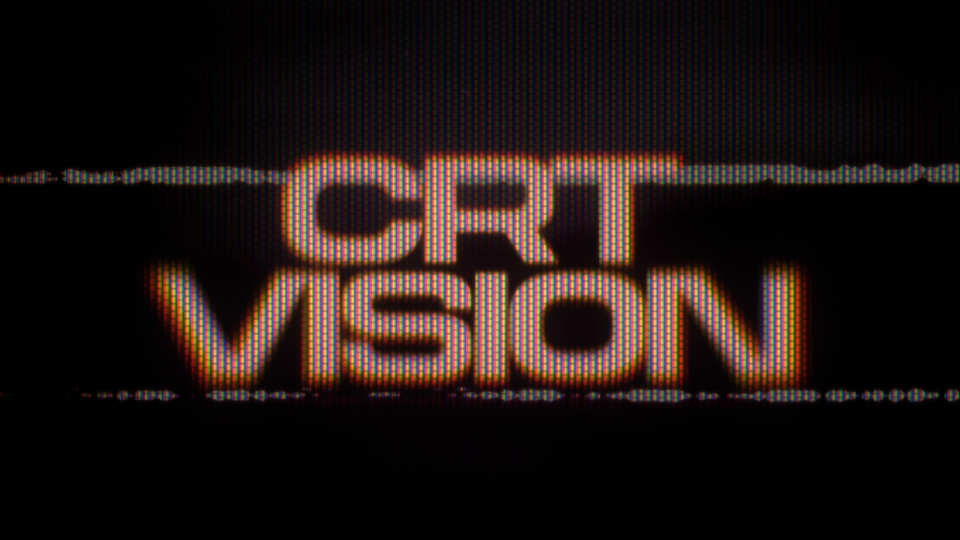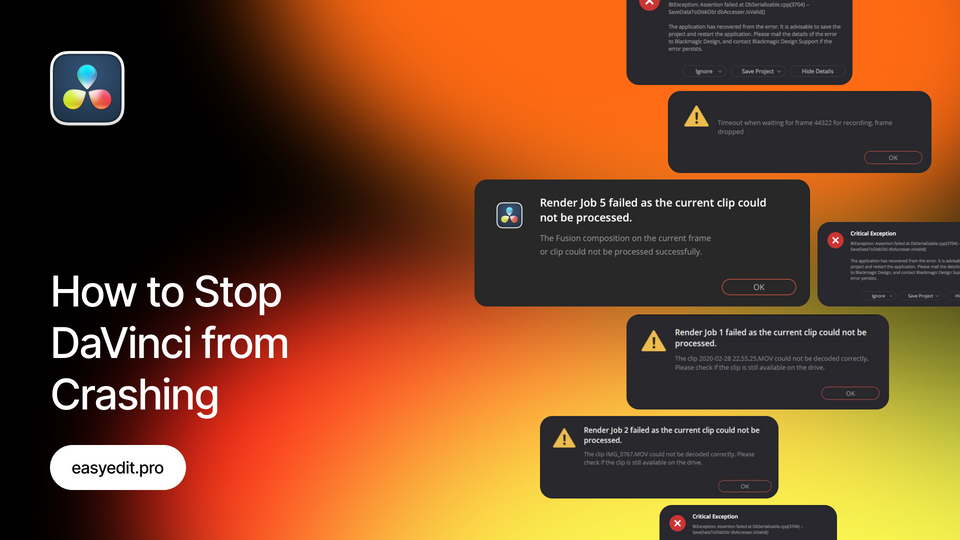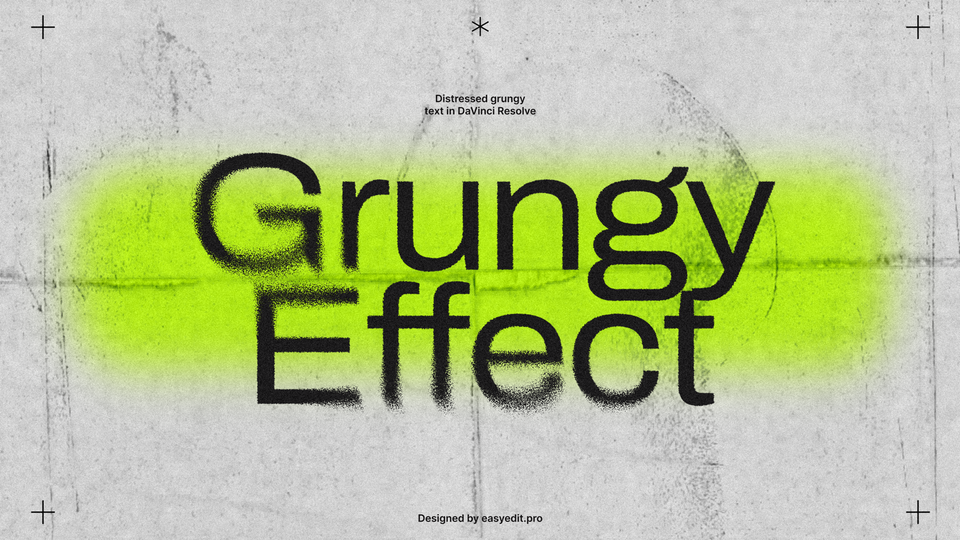
Created: 2 years ago
How to create a VHS effect in DaVinci Resolve
This tutorial will be incredibly easy for beginners and advanced editors alike, so you can repeat it step by step to achieve the same results.
Let’s get to the guide!
DaVinci Resolve Studio
This method will require a Studio version of Resolve, and will take a lot less time.
Adjustment Clip
First, we’ll add our clip(or clips) to the timeline. If we want to apply the VHS effect to several clips, it’s better to apply an Adjustment Clip to them - all the effects and changes will be applied to several clips simultaneously, so you won’t have to copy and paste them.
Search for the Adjustment Clip among the effects and apply it on top of your clips and adjust its duration.
After the Adjustment Clip is applied, we go to the Color Tab. Make sure you’ve enabled the Clips and Nodes buttons - it will allow us to see the preview of each clip see the changes. Here you’ll also see our main Node to which we’ll apply the effects.
Analog Damage effect
Select the Adjustment Clip among the media files and look for the Analog Damage effect. Apply it to our Node.
Take a deeper look to the Setings>Analog Damage menu. Here we’ll be able to personalize our VHS effect and set everything to our liking.
On the Preset panel, we can set the VHS preset that will suit our video - here we have an Early Television preset, 60-ies black and white and color presets, presets for 70-ies, 80-ies and 90-ies and more.
Apart from the ready presets, this effect will give you a vast choice of additional customizations.
For example, you can go to the Broadcast Signal panel and set the Noise Scale, Signal and Chroma Noise, Detail Loss, Ghosting and other parameters that play a huge part in tape aging.
Play around with the settings to customize the effect.
Another incredible panel that you can use in Scan. Here you can shift and scale your clip so it would remind the old tape. For example, drag the H-shift to offset your clip horizontally and the V-shift to offset it vertically, while the V-hold will give us an animated effect. You can also use the Scan Lines to add the old TV lines simulation - you can change Line Sharpness and Frequency, and switch from the colorful to black and white lines.
You can also go below to TV Construction panel and enable the Edge Mask and customize its curvature and aspect to create custom old TV edges.
A final customization you can add here is placed on the VHS panel - here you can apply analog distortion by dragging Restless Foot Height, Offset or Jitter. Try to not overdo it - covering a small part of the screen would be enough to achieve a nice VHS glitch.
DaVinci Resolve Free Version
Achieving the VHS effect in the free version of DaVinci Resolve can be a bit longer and more manual, but it’s still going to bring a great result.
You can start by changing the timeline resolution to make your clips closer to the old tape recording. To do that, go to the Timeline>Output Blanking and change the resolution to 1.33.
Now our clips have got black bars on the sides.
Adjustment Clip
After that, you’ll need to apply an Adjustment Clip, like we did in the studio version.
To do this, go to Effects>Adjustment Clip and drag it to your timeline, on top of your video clips.
It will allow us to apply changes to all clips at the same time and compare the final results to the original.
Color Tab
Now, go to the Color Tab. Make sure you’ve enabled the Clips button and select the Adjustment Clip from the video previews, so we can apply all effects to it.
Go left to the Node menu(you can enable it by clicking on the Nodes button), right-click on anywhere on the menu and select Add Node>Corrector. Link it to our original Node. Repeat the same actions to add a second Corrector Node.
We’ll use our original Node to increase the exposure - old VHS tapes had a lot of dynamic range, so we’ll increase the highlights and blacks on the exposure curves.
Next, we’ll use our first Corrector Node to add some blur. Go to the Blur menu and increase the Radius of our blur.
Click on the second Corrector Node to decrease the Blur Radius and achieve a sharp, ghosted effect.
With our last Node selected, we’ll right-click on the Node menu and add a Splitter Combiner Node, which we’ll use to separate colors and add Chromatic Abberation.
The list of the Nodes we get corresponds to the Red, Green, and Blue channels.
With the first(Red channel) Node selected, click on the Sizing.
Here we’ll significantly shift the Pan, so our red channel will stand out and create red aberration lines.
VHS Overlay
We’re done with the Nodes and can move to the custom part - adding a VHS overlay to our clips. It will bring some neat damage line animations, we can usually see on the old tapes.
There’s a huge list of sources where you can get such VHS overlays. For example, you can use our TV transitions from SWIFT:
After the overlay is applied, you can go to Inspector and change the blending mode to Linear Dodge. You can also try other blending modes to achieve the most realistic result.
The result we’ve achieved is quite decent, though it took a bit more time than using the Analog Damage effect from the Studio effects library.
To Sum Up
Hope you found this guide useful! As you can see, creating a VHS effect in the Studio version of DaVinci Resolve is much easier, as the Analog Damage effect has all of the customizations we need to create an old, realistic VHS tape.
Still, using the free version allows us to build a Node tree and add exposure, color correction and aberration to achieve a pretty similar effect. Adding a VHS overlay would finish the look and provide us with great results.
If you liked this article, make sure you’ve checked our guides for DaVinci Resolve - here we have guides on how to remove objects in both free and studio versions, color grade as a beginner, replace the sky, and much more!
Unlock unlimited templates for DaVinci Resolve - join EasyEdit Stock to get the highest quality LUTs, transitions, text effects, and more, with assets updated daily!
10k elements for Reels and Stories
Looking to add a splash of creativity to your Instagram stories and reels? You're just a click away! Discover our iOS app infi: packed with 10,000+ unique stickers and design elements to breathe life into your social media content.







